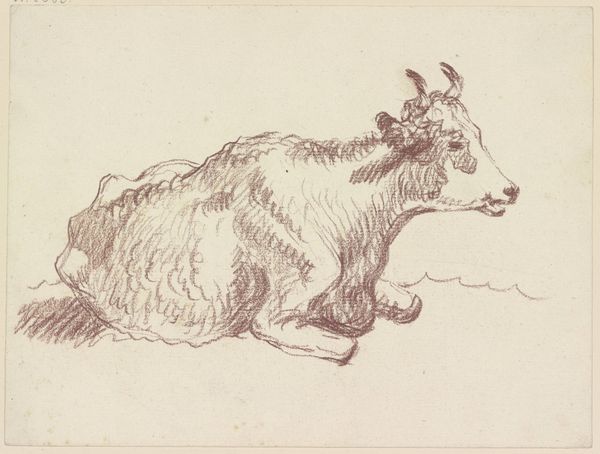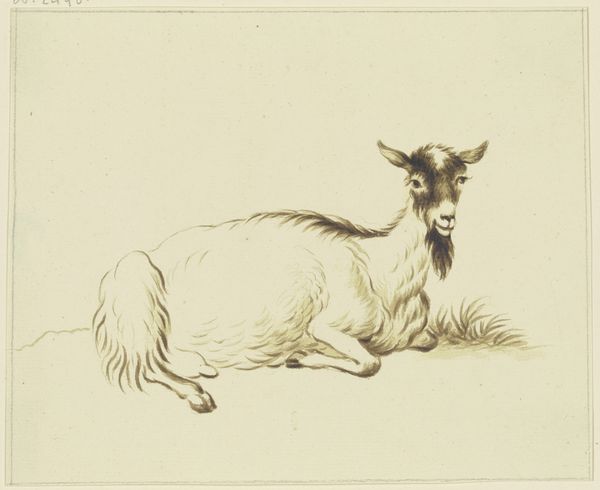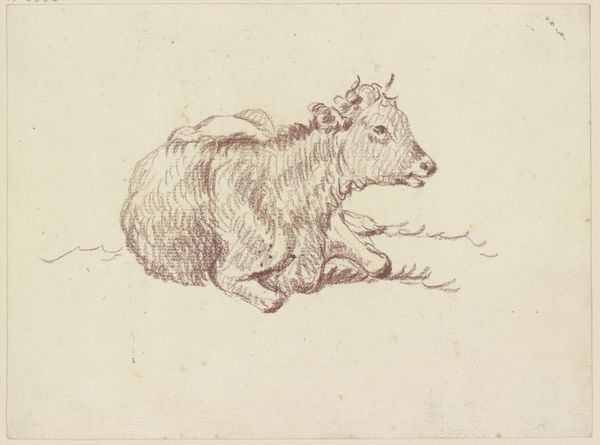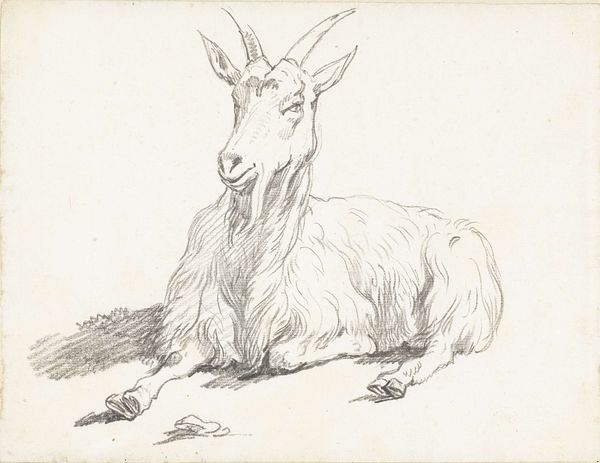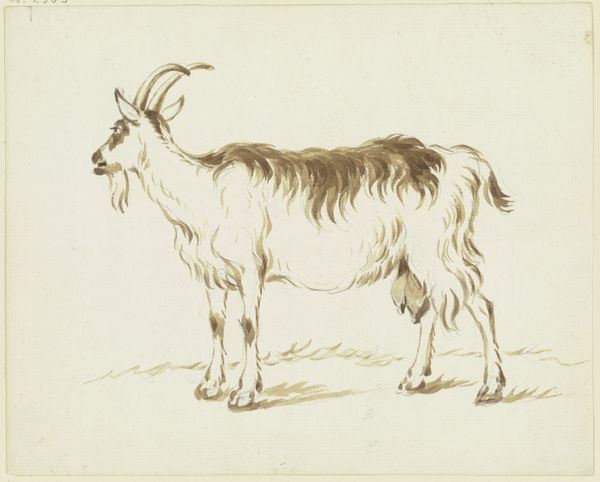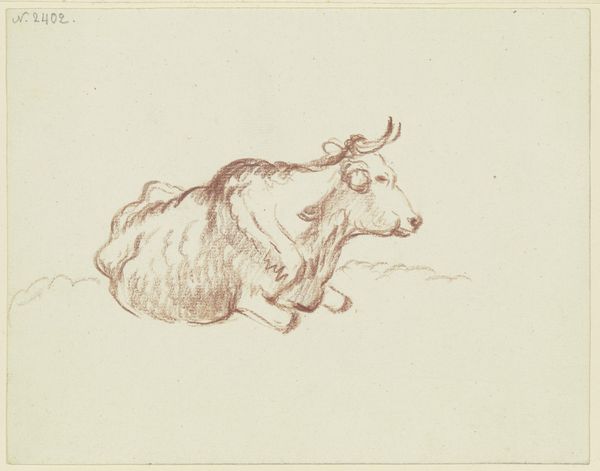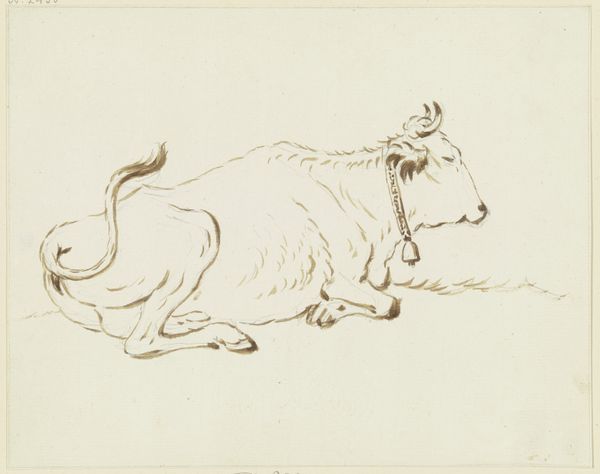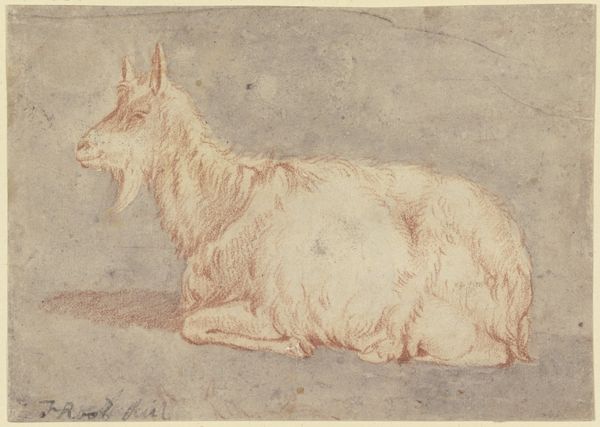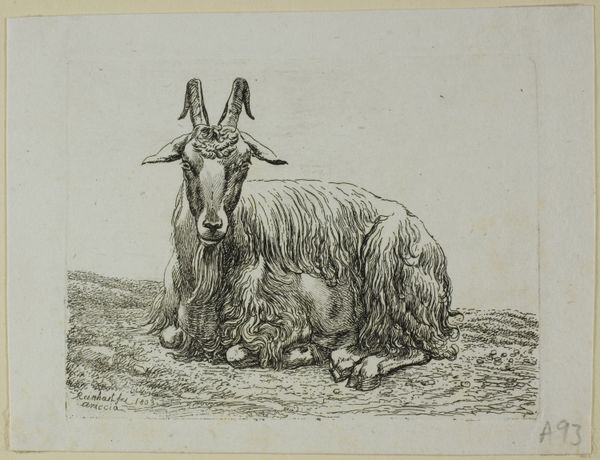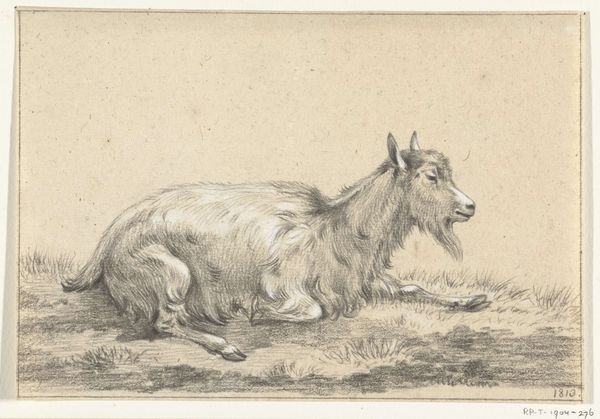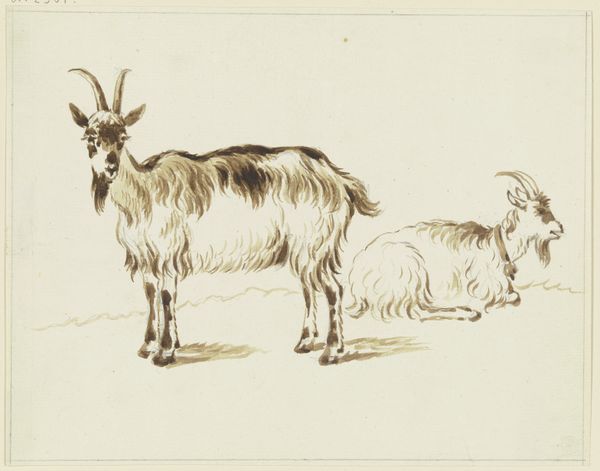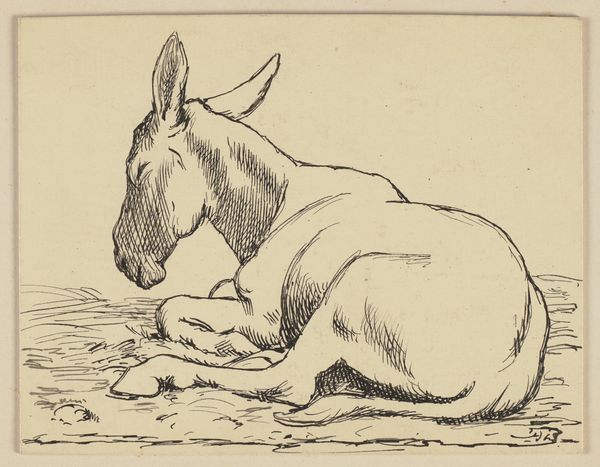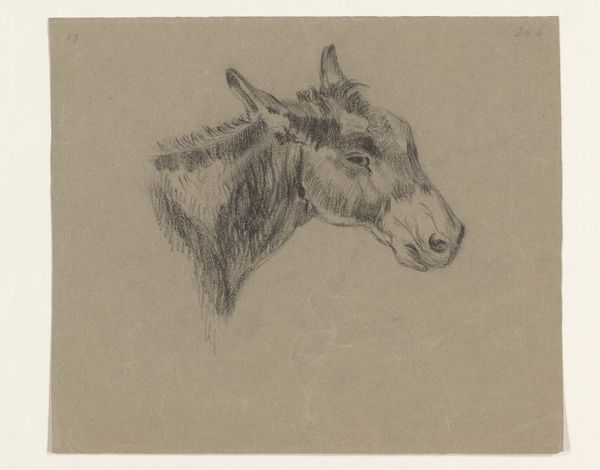
drawing, red-chalk, charcoal
#
pencil drawn
#
drawing
#
amateur sketch
#
light pencil work
#
red-chalk
#
pencil sketch
#
landscape
#
personal sketchbook
#
german
#
pencil drawing
#
15_18th-century
#
sketchbook drawing
#
pencil work
#
charcoal
#
academic-art
#
sketchbook art
#
fantasy sketch
Copyright: Public Domain
Editor: Here we have “Lying Donkey to the Left” by Friedrich Wilhelm Hirt. It's a red-chalk drawing housed in the Städel Museum. There's something very gentle and almost melancholy about it; the donkey looks so resigned. What do you see in this piece? Curator: Indeed. Notice how the artist uses red chalk, reminiscent of the sanguine medium popular during the Renaissance and onward. This invokes a connection to a classical artistic tradition. Red chalk allowed for the building up of soft volumes, mimicking the texture of the animal’s fur. Does the image evoke a certain time or feeling because of this material choice? Editor: Absolutely! The texture is incredible. But, honestly, a donkey? What was its symbolic significance then, if anything? Curator: Well, throughout history, the donkey has carried complex, often contradictory meanings. It can symbolize humility and patience, seen in Christian iconography with Jesus's entry into Jerusalem. But it’s also associated with stubbornness and foolishness in folklore. I wonder if Hirt intended to play with these dual associations, using the animal as a symbol for human nature itself. Editor: That’s a really interesting idea. The donkey is, perhaps, not just a donkey, but a vessel carrying cultural meaning. I can appreciate that! Curator: Precisely! And beyond symbolic value, animal studies like this one were crucial for artists developing their observational skills and understanding of anatomy. By returning to classical materials to represent the subject matter, the artist creates a complex interplay of symbolism and form. Editor: So much more than just a donkey. Thanks for helping me understand the rich cultural weight within this unassuming sketch. Curator: My pleasure. It’s a beautiful demonstration of how the most common of images are, actually, uncommon and potent, filled with symbols that endure over time.
Comments
No comments
Be the first to comment and join the conversation on the ultimate creative platform.
